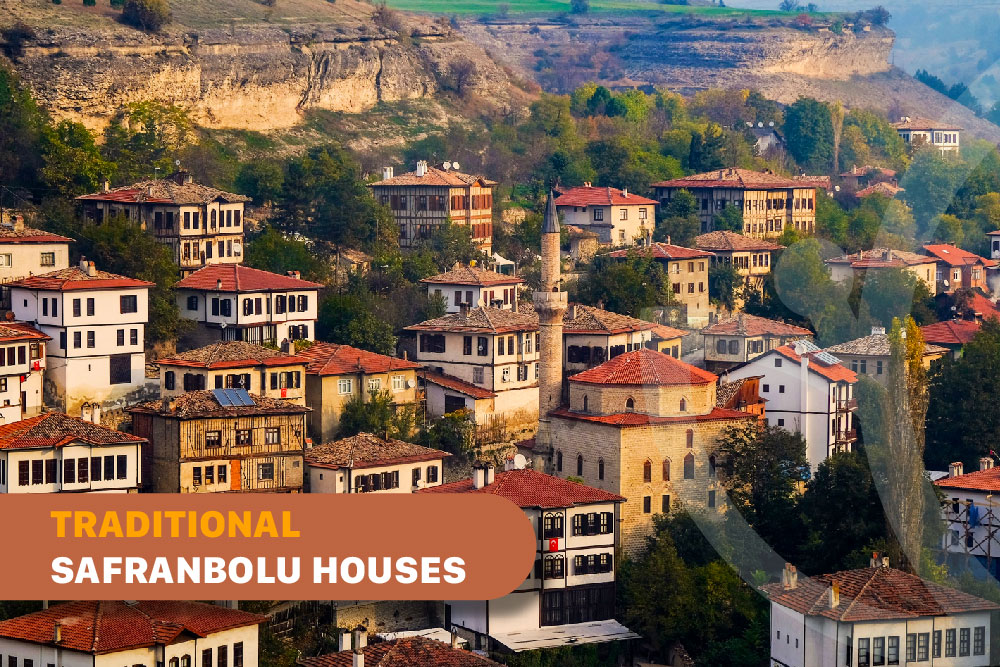
Safranbolu is a typical Ottoman city located in the Black Sea region in Turkey that played key role in caravan trade for many centuries. It prospered as a trading center after the Turkish conquest in the 11th century. By the 13th century, Safranbolu had become an important caravan station. Its designs and houses prove the organic growth of the town as a result of economic expansion. In 1994, it was placed by UNESCO as one of the best preserved 20 cities across the world as an Ottoman city that has survived to the present day.
Safranbolu is known for its Ottoman-era buildings that include mosques, frame houses, inns, Turkish Hammams, fountains and shrines. It has been intently preserved since the Ministry of Culture’s Higher Committee for Immovable Historical Artifacts and Monuments declared Safranbolu on Oct. 8, 1976 as a historical site.
Safranbolu houses and other architectural works look like an open air museum. Safranbolu houses, which are one of the rare Ottoman civil architecture works that have survived to the present day, are dated to the 17th and 18th centuries. In addition to defying years, Safranbolu houses feature with their impressive wooden workmanship too.

Safranbolu houses are divided into two parts
2000 Ottoman houses in Safranbolu could survive to the present day; some of them are open now for tourists, some are still under restoration, and in some, locals continue to live. During the Ottoman era, Safranbolu and its architecture were enriched because of the Silk Road passing through Safranbolu, so the locals have divided their houses into two parts; summer and winter houses.

Winter houses (in Çukur) in Safranbolu are located in the valley near the river, while summer houses (in Bağlar) were built at an altitude of about 350 meters and at a 4 km distance from winter houses. Winter houses region is also the trade area in the city. Leather shops, Blacksmiths, shoemakers, coppersmiths, and others are located here. On the other hand, Summer houses were built in a way to have a more comfortable and relaxing life between vineyards and gardens.
In the past, “Bağlar” was the summer resort place for wealthier families. People in Safranbolu were living in the “Çukur” during winter and spring time, and moved to “Bağlar” in summer. Each family had one winter house in “Çukur” and another summer house in “Bağlar”. Today “Bağlar” is no longer the summer vacation district, but a permanent living quarter.
Bağlar

The pattern of Bağlar, which is also called the Vineyards, consists of single houses set within large gardens. Bağlar area is on the northwest slope of the Safranbolu, looking to the south, was the summer resort for Safranbolu.
Çukur
The streets in Çukur are narrow and curved, creating wider view at the corners following topographic lines, and the diverse consoles of the houses contribute to creating interesting street perspectives. The streets are unique with stone paving, sloping inwards to evacuate surface water, and older houses are half-wooden, while the spaces between the woods are filled with different building materials. There are no windows on the street frontage, so that stone walls look like extensions of garden walls. Main rooms on the first floors are often paneled with built-in cupboards, shelves, fireplaces and benches. Ceilings are usually lavishly carved and painted. The rooms serve various purposes and are connected together with halls called “sofa”, which are very important and essential elements of the house.
The main way a homeowner could show off his wealth was in the quality and amount of wooden furnishing he possessed.
Walking around in Safranbolu will surprise you with how simple and beautiful Ottoman architecture was! You will feel joy and tranquility. Don’t forget to take photos of everywhere you go in Safranbolu because this beauty will not be found anywhere else across the globe.

No comment